In its 2014 avatar, the Etios comes across as a much more cultivated car than its original forebear
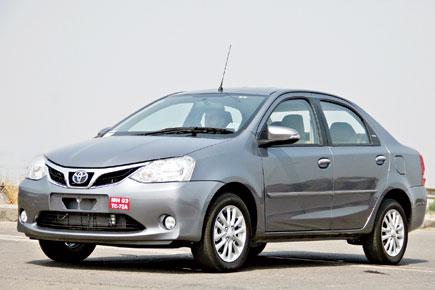
Toyota Etios, Test Drive, cars, review, Amit Chhangani, automobile review
Toyota Etios’ journey in India has been rather evolutionary. Introduced as a made in India, made for India product
with much fanfare at the 2010 Auto Expo, the Etios was expected to place Toyota in the big volumes orbit. Things didn’t quite turn out the way Toyota envisioned, though, and the Etios met with a relatively underwhelming response.
ADVERTISEMENT
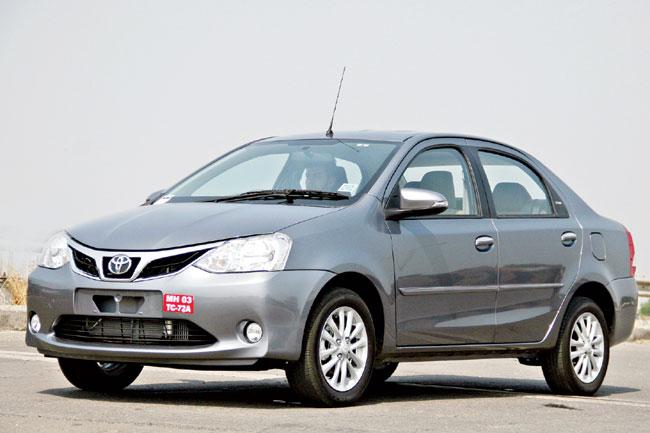
Price: Rs 8.15 lakh (VXD). Starts from Rs 6.8 lakh for diesel variants
Persistent as ever, however, Toyota kept refining the product industriously, based on customer feedback. As a part of the evolutionary process, Toyota recently introduced another significant update to its entry-level sedan offering.
Here’s our take on the refresh.
Design and styling
The biggest exterior change on the 2014 Etios sedan is its new radiator grille. The entry-level sedan gets a liberal splattering of chrome, in line with the preferences of the Indian car buyer. The new grille looks ‘fuller’, covering a larger part of radiator, and extends down into a trapezoid bearing the big Toyota logo. The new grille isn’t just more chrome-laden, but also manages to give the face of the Etios a more complete look.
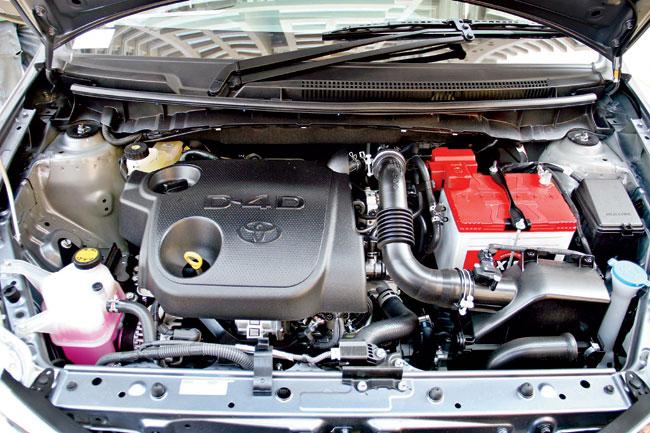
The 1.4-litre diesel engine powering the Etios is one of the most tractable and fuel efficient units in the segment. PICS/AMIT CHHANGANI
Also new, along with a fresh pearl white shade are the 12-spoke 15-inch wheels, which look rather good. For those looking for some more character for their ride, Toyota is providing a whole bunch of accessories. There are two
accessory packs to choose from — Real Luxury and Décor.
The Real Luxury collection includes chrome garnish for the headlamps, tail lamps, ORVMs, side visor and rear doors along with a wooden gear shift knob. The Décor Collection comprises a side door visor, chrome side door mouldings,
bumper corner protector, roof spoiler, car cushions and steering wheel cover.
Cabin and comfort
The most visible change on the inside is the armrest on the door panel, which is now finished in a darker shade of faux wood, and looks quite nice. The cabin also gets electrically adjustable ORVMs, and a chrome surround for
the base of the gear shifter unit.
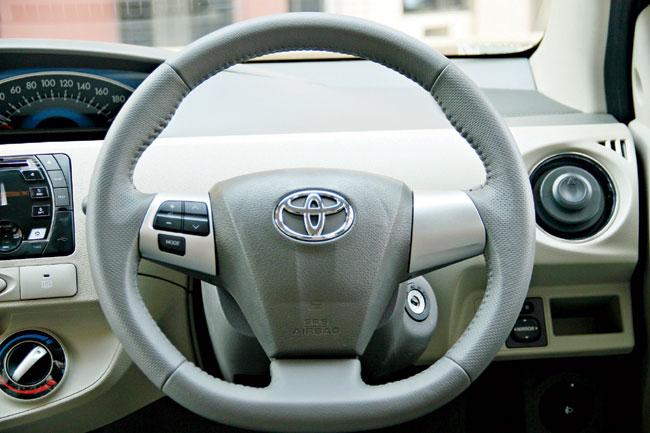
The three-spoke flat-bottomed chunky steering wheel is a pleasure to hold and operate at slow speeds
The Etios facelift released last year incorporated significant changes in the cabin. All those value-additions are carried over in the 2014 version. The alterations include a lighter shade for the dashboard for an airier feel, height adjustment for driver’s seat, and an overall improvement in the quality of the materials inside the cabin along with a few other nifty additions. New seat fabric, a blue backlit centre console with LCD display, digital clock, two new rear speakers in addition to the speakers in front, two DIN audio with Bluetooth, USB Aux–in and remote, steering mounted audio controls and a cooled glove box are a few more features worth mentioning. Reverse parking sensors and warning buzzer for seatbelt; door ajar and headlamp warnings are some other features which have been added to the car based on customer feedback.
The new 2014 Etios comes with twin front airbags as standard. This is a welcome step, and should be emulated by the rest of the industry to ensure the safety of the occupants, especially in the wake of the poor safety performance by
some Indian car models at the Global NCAP crash tests.
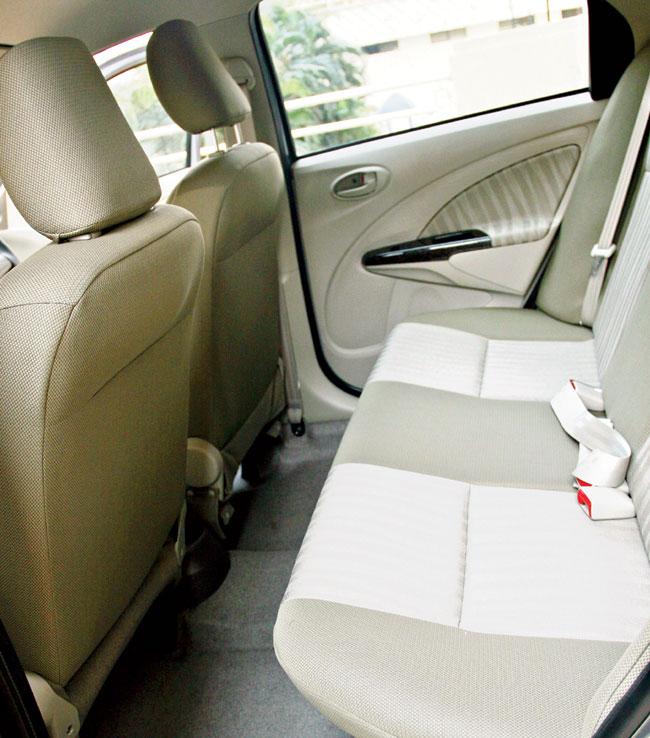
The space at the rear is class leading. The seats have been modified to offer more comfort and support
The space inside is class leading as always, and the interior is a bit more comfortable too with the seats having been improved for better support. The overall quality and finish inside the cabin is satisfactory. The A/C vents, though functional, could have been easier to use. The Audio unit doesn’t blend very well with the rest of the cabin, and though feature-rich, isn’t very intuitive to use. It takes some time getting used to it. The sound output, though, is good for the segment.
Ride and handling
The flat bottomed, relatively small steering wheel on the Etios is a delight to hold and operate. It’s probably the chunkiest, nicest steering unit in the segment. It’s light, though, and doesn’t feel substantial enough on the move.
Manoeuvring the car in tight spots, however, is a breeze. The steering gathers some weight with speed, though even with all its sporty form, doesn’t have the engagement to enthral the driving enthusiast.
The previous version of the Etios felt somewhat trashy in terms of ride quality. The car’s dampers have been tweaked to lend it a more substantial, composed feel. The noise from the suspension has reduced significantly and the
ride quality has improved too. Straight-line stability doesn’t leave anything to complain about, and the car is fairly predictable around bends as well. The Etios isn’t a driver’s car though, and hurtling it around corners with
disdain uncovers its limited dynamic ability. If you are looking for driving thrills, you should probably be looking elsewhere.
The NVH (noise, vibrations and harshness) levels have been reduced to a great extent. The blokes at Toyota have padded all the places that matter to make the Etios feel like a better built, better insulated and somewhat more
planted car. On the move, the Etios feels noticeably more mature than its predecessors.
From behind the wheel, it somehow manages to feel like a bigger, more planted car than it previously did.
Engine and transmission
We drove the Etios 1.4 VXD, which is the top of the line diesel variant. The 1.4-litre diesel engine on the Etios is one of the most useable and practical oil-burners in the segment. It’s uncannily linear in terms of power and torque
delivery and makes for an effortless driving experience in the city. Power and torque output figures stand at 68PS @ 3,800 rpm and 170 Nm @ 1,800 rpm respectively. The ARAI fuel efficiency figure for the car stands at 23.59
kmpl, which is one of the highest for the class.
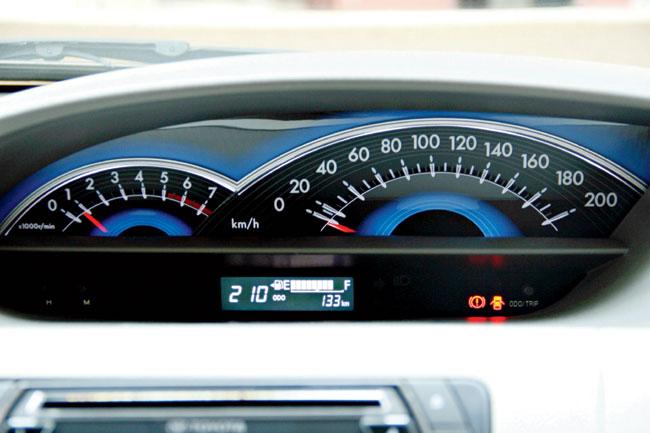
The centrally mounted instrument console doesn’t look very premium. Lack of fuel efficiency related data on the MID is also sorely missed
While the engine output figures don’t look too strong, the Etios doesn’t feel underpowered, especially within the city confines. The low and mid range performance of the engine suits the slow to medium speed city traffic well
and using this car for an everyday commute to work should be a breezy affair, unlike some other turbo diesels in the segment which need to be kept on the boil by way of frequent downshifts. There is sufficient shove available
from 1400 rpm onwards, post which the momentum keeps building in a linear fashion. The engine doesn’t have much in reserve in its upper band, though. It doesn’t like being revved hard, and isn’t the kind of unit which would make you the swiftest thing on the highway.
Our verdict
The Etios is a bit more expensive than the other options in the segment. It costs about R40-50K more than its closest competitor, the Mahindra Verito. The gap is even wider when you compare it with the sub-4 metre bunch of the Dzire, Xcent and Amaze. Then again, the Etios is a much more spacious car.
On the upside, the Etios is the only car in the segment, which comes equipped with dual airbags even in the base variant. Also, Toyota’s service, though not the most widespread, is probably the best in terms of quality and customer satisfaction. They have some of the most faultless processes in place and their overall score in the customer rating surveys in India has been immaculate.
The Etios isn’t a fancy looking car, nor is it the fastest or has the best handling. It is however a comfortable, spacious, practical and reliable car, with low maintenance and running costs. If those are the qualities you appreciate, taking a test drive is strongly recommended.
 Subscribe today by clicking the link and stay updated with the latest news!" Click here!
Subscribe today by clicking the link and stay updated with the latest news!" Click here!






